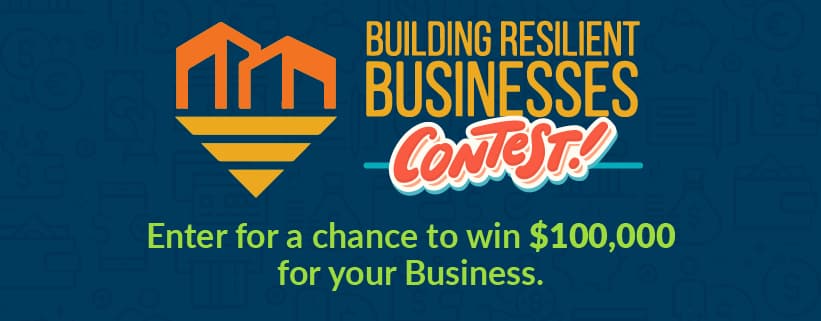Federal pandemic-related assistance for small businesses has all but dried up, as money for programs such as the Paycheck Protection Program, the Restaurant Revitalization Fund and the Economic Injury Disaster Loan (EIDL) programs have been used and Congress is pushing back hard on renewing them. As small businesses are still reeling from the current, difficult economic conditions, they can still turn to their state governments and other corporations for grants and relief packages.
Various states have different programs that are set up and still funded, and if you still need help as a small business, you should look into whether you qualify for any of these grants.
The Empire State
If you’re seeking state aid for small businesses, New York is a great place to start. There are more than 623,000 small businesses in New York State (including New York City) that account for 53% of the jobs in the state, making New York one of the biggest hubs for small businesses in the US. The state is offering several small business grants, and there are even some national grants (and one contest!) that small businesses in New York can apply for.
Kapitus’ $250K Building Resilient Businesses Contest
Kapitus has launched its Building Resilient Businesses contest, in which one first-place winner will receive $100,000, one second-place winner will receive $50,000, and five third-place winners will receive $20,000. To enter, simply send a homemade, 2-3 minute video of yourself briefly describing your business, how it was able to persevere over the past two years, and how you would spend $100,000. The contest is open to all small businesses in the US (excluding Vermont and Colorado) that have been in business for at least a year and have less than $5 million in annual revenue. The deadline to apply is June 30, 2022 For an official list of rules, click here.
The State Farm LISC Grant Partnership
State Farm, through its partnership with Local Initiatives Support Corporation (LISC) is providing new grants totaling $2 million to support small businesses in underserved communities. Some funding will go towards helping small businesses operate in low income communities, and some will go towards community development. The latest round of funding will go towards 12 communities: New York City, Atlanta, Houston, Chicago, Central Illinois, Milwaukee, Minneapolis, Philadelphia, Phoenix and the Puget Sound region in Washington State.
Olean Marketing and Rent Grants

The city of Olean, NY is giving out grants to assist small businesses with rent.
The city of Olean in upstate New York is offering local small businesses with $200,000 in small business grants. Small businesses can apply for money to cover marketing costs, including advertising and eCommerce set up costs, and to help with rent as we come out of the COVID-19 pandemic. Eligible small businesses can have 25% of their rent covered for up to two years. Businesses can apply for up to $5,000 under each program. There are multiple rounds in this grant program, and the first deadline is June 10, followed by July 15, 2022 and August 12, 2022.
New York State COVID-19 Pandemic Small Business Recovery Grant Program
New York’s state government is still providing grant assistance to small businesses that suffered through the pandemic. These small businesses can be micro-businesses or arts and cultural organizations, and the amount they can apply for ranges between $5,000 to $50,000. Businesses can apply by phone, and there is no set deadline.
Tourism Return-to-Work Program
New York’s Empire State Development program is offering grants to small businesses in the tourism, transportation and accommodations industries throughout the state to encourage employment. Eligible businesses must have hired or plan to hire at least two full-time employees in the first half of 2022 and show that their business suffered through the pandemic. Grants may provide up to $5,000 for each employee. There is no stated deadline for these grants.
Meet in New York Grant Program
New York’s Empire State Development Program is also offering grants to small businesses that host conferences, meetings and trade shows throughout the state in order to invigorate tourism and boost economic activity that had slowed due to coronavirus. Grants will cover a portion of the costs of events and offer discounts through tourism businesses. For example, the grant may offer to cover the costs of blocks of hotel rooms so event planners can offer discounts to event attendees. Venues with capacities of at least 250 people are eligible. There is no hard deadline for these grants.
New York Restaurant Resiliency Program
If you own a restaurant in New York and are worried that the federal Restaurant Resiliency Program has

New York State’s Restaurant Resiliency program is still granting money to food service businesses and food banks.
been shut down, then worry no more: New York State’s Dept. of Agriculture and Markets’ Restaurant Resiliency program is still open for business and is providing $25 million in funding to restaurants and food banks through the state. The funding goes to food banks, which can then be used by restaurants to cover meals. Food businesses can apply online, and food banks can apply for direct assistance.
The Biodefense Commercialization Fund
If you’re a small business in New York state that specializes in certain aspects of healthcare such as infectious diseases, vaccines, therapeutics and diagnostic tools, you’re in luck. The state is offering up to $40 million in grants to startups and academic centers that specialize in this field to encourage the expansion of availability of various treatments and vaccines for infectious diseases. Grants range between $1 million to $4 million, while academic institutions can apply for amounts between $250,000 and $500,000. Eligible companies must have received or are in the process of receiving series A or B funding and intend to stay in business for at least three years after receiving their grants. Small business can apply online.
New York Arts Grants
The New York State Council on the Arts is providing over $3 million in grants to entrepreneurs or individuals seeking to pursue a career in various artistic fields, including emergency grants for those experiencing health issues and receiving awards, as well as fellowship opportunities for new artists. Deadlines to apply are throughout the year and next year, and this includes artists and studios throughout the state, including New York City.
Don’t Give up Free Money!
While the US Congress has apparently shut its doors to new pandemic relief spending, your should always look to your state government or national grant programs that your small business may be eligible for. There is financial relief for your business, and with a little research, you will be able to find it.
Related Articles:
Small Business Grants and Contests Still Available in New Jersey
Small Business Grants and Contests Still Available in Florida
Small Business Grants Still Available in California
Small Business Grants and Contests Still Available in Illinois








